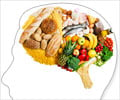Older brain's reduced capacity to filter extraneous information may be a blessing to aging adults , a new study has found.
In the study, scientists at Baycrest's world-renowned Rotman Research Institute demonstrated that when older adults "hyper-encode" irrelevant information - and they typically do this without even knowing they're doing it - they have the unique ability to "hyper-bind" the information; essentially tie it to other information that is appearing at the same time.The study appears online this week in the journal Psychological Science.
Lead researcher Karen Campbell, a PhD student in psychology at the University of Toronto, said: "We found that older brains are not only less likely to suppress irrelevant information than younger brains, but they can link the relevant and irrelevant pieces of information together and implicitly transfer this knowledge to subsequent memory tasks."
In the study, 24 younger adults (17 - 29 years) and 24 older adults (60 - 73 years) participated in two computer-based memory tasks that were separated by a 10-minute break. In the first task, they were shown a series of pictures that were overlapped by irrelevant words (e.g. picture of a bird and the word "jump"). They were told to ignore the words and concentrate on the pictures only. Every time they saw the same picture twice in a row, they were to press the space bar. After completing this task and following a 10-minute break, they were tested on a "paired memory task" which essentially challenged them to recall how the pictures and words were paired together from the first task.
They were shown three kinds of paired pictures - preserved pairs (pictures with overlap words that they saw in the first task), disrupted pairs (pictures they saw in the first task but with different overlap words) and new pairs (new pictures and new words they hadn't seen before).
The older adults showed a 30 percent advantage over younger adults in their memory for the preserved pairs (the irrelevant words that went with the pictures in the first task) relative to the new pairs.
Advertisement
SAV














